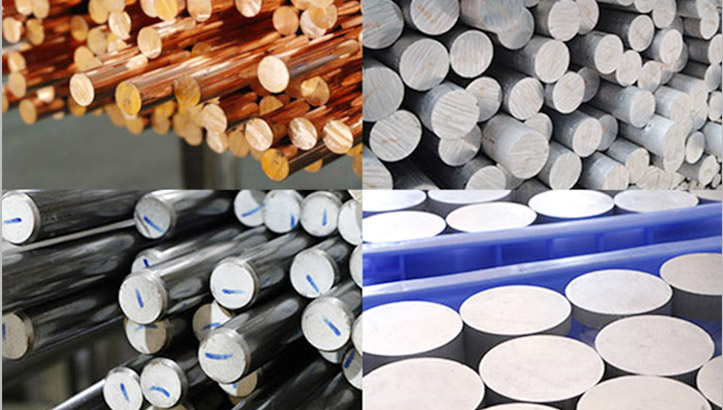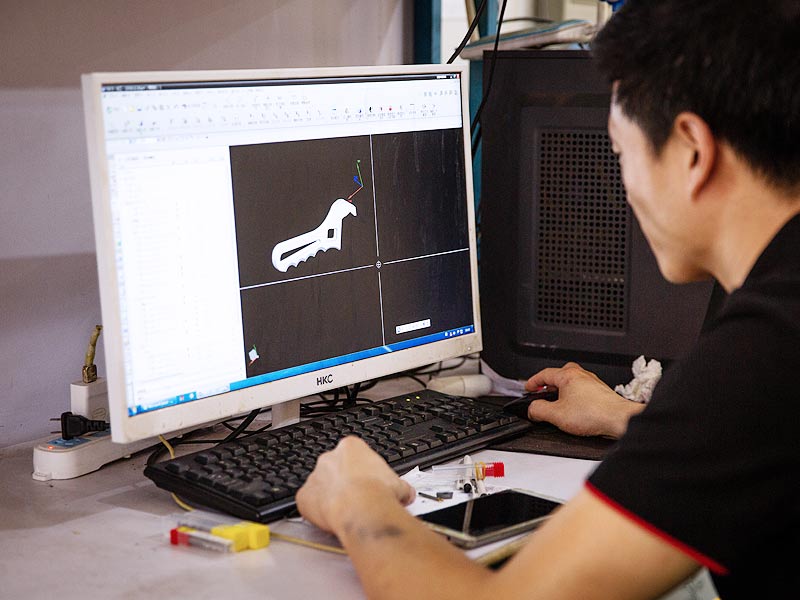VMT’S blogs aim to share our practical experience and knowledge accumulated during the manufacturing and product development process. Our goal is to use these articles to help you improve product design and increase your understanding of CNC machining, 3D printing, rapid prototyping, low-volume manufacturing, and surface treatment technologies. The information we provide is designed to provide actionable guidance and insights for your CNC machining projects.
Exploring Material Properties: Ductility, Strain and Toughness
The quality and efficiency of CNC machining not only depends on the advancement of the machine tool and the accuracy of the program, but is also closely related to the performance of the material being processed. Among them, the basic properties of the material, such as ductility, strain capacity and toughness, are directly related to the difficulty of material deformation control during the processing, the stability of the processing accuracy and the overall quality of the final product. Therefore, in-depth exploration of these material properties is of great significance for optimizing CNC machining strategies.
Material Properties Overview
Ductility: Ductility refers to the ability of a material to undergo plastic deformation without breaking immediately when subjected to external forces. In CNC machining, especially in the process of removing materials such as milling and turning, the ductility of the material directly determines the roughness of the machined surface, shape accuracy, and tool wear.
Strain: Strain is the change in shape or size of a material when it is subjected to an external force. In CNC machining, strain not only involves the elastic deformation of the material, but more importantly, the plastic deformation process. The strain behavior of the material can be optimized by precisely controlling the machining parameters, such as cutting speed, feed rate, cutting depth, etc.
Toughness: Toughness is the ability of a material to resist fracture when subjected to impact or dynamic loads. Materials with high toughness can better resist the impact force of tool cutting, reduce the risk of cracks and fractures, and ensure the smooth progress of the machining process.
Relationship Between Ductility and Toughness.
Ductility and toughness are two key aspects of the mechanical properties of materials. Although they are different, they are interrelated. Ductility refers to the ability of a material to undergo plastic deformation without breaking when subjected to external forces, while toughness emphasizes the ability of a material to absorb and dissipate a large amount of energy before breaking.
Generally speaking, materials with higher ductility tend to also exhibit a certain toughness because they can undergo greater plastic deformation under external forces and thus absorb more energy. However, this relationship is not absolute because the internal structure, chemical composition, and external environmental conditions of the material will affect its ductility and toughness.
When engineers select materials, they will consider the ductility and toughness of the materials according to the needs of specific applications. Some applications require the material to absorb a lot of energy without breaking immediately when it is impacted or overloaded, at which time toughness becomes the main consideration; while some applications are more concerned with the stability and controllability of the material during deformation, at which time ductility is more important.
Difference Between Ductility and Toughness.
Ductility and toughness are two core characteristics of the mechanical properties of materials, and they are significantly different.
Materials with excellent ductility can exhibit a large range of plastic deformation when subjected to external forces until they reach their fracture limit. In contrast, brittle materials often break after undergoing a small deformation and lack good ductility.
Materials with high toughness can absorb and consume a large amount of energy during the fracture process. This property is crucial for situations that need to resist impact and prevent sudden fractures, such as seismic design of building structures, safety protection equipment, etc. Toughness is not only related to the strength of the material, but also reflects its stability and reliability in complex stress environments. Although ductility and toughness are both important mechanical properties of materials, they have different focuses. The former focuses on the deformation potential of the material, while the latter emphasizes its energy absorption capacity to resist fracture.
High Toughness and High Ductility.
The performance of a material is largely determined by its toughness and ductility. Highly tough materials can absorb large amounts of energy without breaking easily. Conversely, highly ductile materials can deform significantly when stretched or bent without breaking, a property that is particularly important in metal processing, flexible electronics, and biomedical applications that require materials to bend or stretch without failure.
It is worth noting that some materials can exhibit both high toughness and high ductility. This combination of properties makes them advantageous in a variety of application scenarios. For example, some special steels and alloys are widely used in various fields due to their high strength, high toughness and good ductility.
In summary, toughness and ductility are two important aspects of material performance. Although there is no direct relationship between them, they are both important factors in evaluating the performance of materials in specific applications. When selecting materials, these two properties need to be balanced according to specific needs.
Factors that Influence Resilience.
Materials: Different types of materials have different toughness. For example, metals are generally tougher than brittle materials such as ceramics or glass because the atoms inside metals are tightly packed together and can absorb energy through plastic deformation.
Microstructure: The microstructure of a material, including grain size, phase distribution, and interface structure, will affect its toughness. Grain refinement usually improves the toughness of material because smaller grains mean more grain boundaries, which can hinder crack propagation. In addition, the distribution of phases and interface structure will also affect the toughness of a material.
Temperature: Temperature is an important factor affecting material toughness. Generally speaking, as the temperature decreases, the toughness of the material decreases. This is because the plastic deformation ability of the material is weakened at low temperatures, and the resistance to crack propagation is reduced. However, under certain specific conditions, such as the low-temperature toughening phenomenon of some metal materials, lowering the temperature may actually increase the toughness of the material.
Stress state: The stress state also affects the toughness of the material. Under multiaxial stress states, the toughness of the material may change. For example, under a combined tensile and compressive stress state, the toughness of the material may increase because the tensile and compressive stresses can offset each other and reduce the formation and propagation of cracks.
Machining technology: Processing processes such as forging and rolling will cause stress and deformation inside the material. These stresses will affect the toughness of the material to a certain extent.
In short, there are many factors that affect toughness, including material factors, external conditions, and processing factors. When designing and selecting materials, these factors need to be considered comprehensively to optimize material performance and meet specific application requirements.
Difference Between Strain and Ductility
Strain and ductility are two key elements of material mechanical properties, which reveal the behavior of materials under stress from different perspectives. Strain, as a specific quantitative physical quantity, reflects the degree of dimensional change of a material when subjected to stress.
In contrast, ductility is a more macro and comprehensive concept that measures the amount of plastic deformation a material can undergo before breaking, that is, the ability of a material to be stretched or bent without breaking. This property is usually quantified as elongation, which is the proportion of the increase in length after the material breaks.
In summary, strain focuses on the precise measurement of local dimensional changes in a material, while ductility focuses on the range of plastic deformation that the material as a whole can withstand before fracture.
How is Strain Related to Ductility?
Strain and ductility are two basic properties of material mechanical properties, and they play an important role in understanding and evaluating material behavior.
Strain is a physical quantity that describes the dimensional change of a material when subjected to an external force. Specifically, it is the ratio of the change in the length of the material to the original length (ε = ΔL / L0). This parameter helps us understand the degree of deformation of a material under stress and is the basis for evaluating the material’s elasticity, strength, and energy absorption capacity.
On the other hand, ductility reflects the plastic deformation that a material can withstand before breaking. It is usually expressed as elongation, which is the percentage of the increase in length of the material after breaking to the original length (elongation % = (Lf – L0) / L0 * 100%). A material with high ductility means that it can undergo more deformation before breaking, showing better toughness and fracture resistance.
There is a close connection between strain and ductility. Generally, materials with good ductility can withstand greater strains before breaking because they can undergo more plastic deformation without breaking. In contrast, materials with poor ductility may break at smaller strains.
In Conclusion
Ductility, strain and toughness, as important components of material properties, play a vital role in CNC machining. In-depth exploration of these material properties can help improve machining quality and efficiency and optimize machining strategies.
Frequently Asked Questions About Ductility, Strain and Toughness
Does Toughness Increase as Hardness Increases?
Toughness does not necessarily increase with increasing hardness. Toughness and hardness are two different aspects of material mechanical properties, and there is no direct linear relationship between them.
Hardness is an important performance index to measure the softness and hardness of metal materials. It reflects the ability of the material to resist elastic deformation, plastic deformation or destruction.
Toughness refers to the ability of a material to absorb energy during plastic deformation and fracture. When subjected to external forces, materials with good toughness can undergo greater plastic deformation without immediately breaking, thereby absorbing more energy.
What is the Difference Between Toughness and Plasticity?
The main difference between toughness and plasticity is that toughness focuses on the energy absorption before fracture, while plasticity focuses on the ability of a material to undergo plastic deformation without failure.






